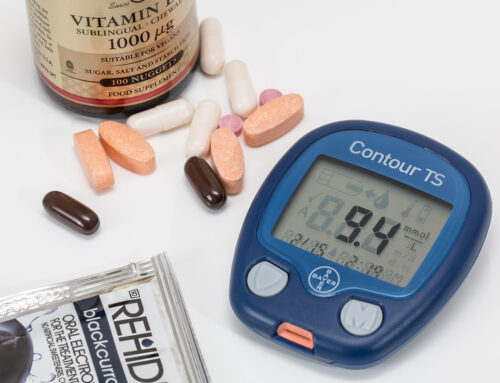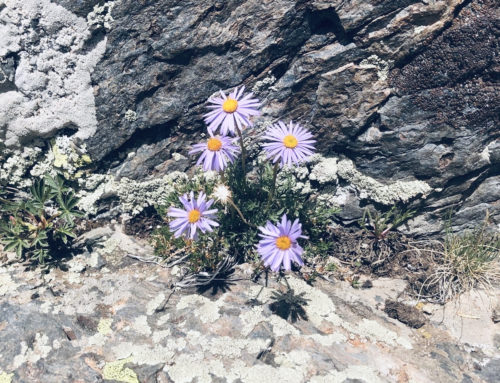Without kale, I do not know where I would be. I grow it, saute it, bake it, puree it, chop it, massage it and most importantly, chew it very carefully. When I am not growing kale, it is always the first thing on my grocery list. I gauge my need to go to the store by how much kale is left in the refrigerator drawers. I have three children, and I am slowly, ever so slowly, opening their minds to the idea of eating it. I have the most success when they cannot see it and don’t have to chew it, but I still feel a small triumph when I see them sipping their green smoothies!
I got turned onto kale many years ago. I was in love instantly when someone brought a Kale Avocado Salad for dinner. You probably also remember your first encounter with this superfood. Before this dinner, the name of this salad would not have been interesting in the least. I would have passed it up on a menu in a heartbeat. Raw kale?? Are you kidding me? How punishing can food get? Besides, isn’t that a decoration on a buffet or salad bar? However, I learned that this is the best reason to take people up on their offer to bring food to your house — they may just bring something that will change your life. My friend Tracy “massaged” this kale with olive oil and balsamic vinegar and accompanied it with ripened avocado, pumpkin seeds, and strawberries slices. All I heard after taking my first bite were harps playing all around me. Delicioso! I was so impressed that I immediately began looking for other ways to use kale.
I wanted to name our son Kale — think about it, it is like Dale, just with a “K”. I think everyone would have eventually gotten used to it. Don’t most people get over whatever seemed so strange at the time? But, I couldn’t bear to hear myself yelling for “Kale” at a soccer match, or worse, in a hockey rink. We named him Evan.
When I started reading about kale, I realized that its beautiful color was not only enticing, but also signaled a major source of many nutrients. Kale has 354% of the Recommended Dietary Allowance (RDA) for vitamin A, 88% of the RDA for vitamin C, 1327% of the RDA for vitamin K and 10% for fiber. Kale has more iron than beef and more calcium per 90 gram serving than milk — the calcium from kale is better absorbed than calcium from dairy as well!
Kale — a member of the cruciferous vegetable family, which includes Brussels sprouts, cabbage, broccoli, bok choy, cauliflower, and collards — has three major areas where it shines: it is an anti-inflammatory, anti-oxidant and anti-cancer power-packed food.
Anti-inflammatory:
Most of kale’s anti-inflammatory behavior comes from the omega-3 content. According to researchers, it only takes 100 calories of kale to provide us with 25-35% of the alpha-linoleic acid, an important omega-3 fatty acid which acts directly as an anti-inflammatory. Additionally, its high levels of Vitamin K serve as a key nutrient for helping regulate our body’s inflammatory process. Kale has an incredibly high amount of vitamin K — 1327% of the RDA for vitamin K. So put kale on your list of anti-inflammatories and foods to help you lower your risk of chronic inflammation. Additionally, the antioxidants in kale quench free radicals. Left unquenched, these free radicals would cause damage and inflammation.
Antioxidant:
Kale has unusually high concentrations of two main antioxidants: carotenoids and flavonoids. Carotenoids, such as lutein and beta-carotene, take center stage in kale. Researchers have watched blood levels of these carotenoids increase proportionally to the amount of kale consumed, which quiets the naysayers’ objections to food as cancer prevention. Carotenoids are inversely related to cancer growth. These two carotenoids are key protectors of our body from free radical damage or oxidative stress. Conditions from oxidative stress include: cataracts, atherosclerosis, chronic obstructive pulmonary disease (COPD), cancer, cardiovascular disease, accelerated aging, metabolic stress and more.
The main flavonoids found in kale include kaempferol and quercitin — antioxidants that scavenge damaging particles in the body known as free radicals, which damage cell membranes, tamper with DNA, and even cause cell death. While these are the main flavonoids, there appear to be over 45 flavonoids in kale, some of which have not been named yet. This is why it is important to eat the entire plant rather than exclusively taking supplemental flavonoids, such as quercitin. We may find that the most powerful flavonoids have yet to be discovered!
Anti-cancer:
Kale has been shown to reduce the risk of cancer of the ovary, bladder, breast, prostate, and colon via phytochemicals called glucosinolates. These glucosinolates undergo a conversion to sulphoraphane. Sulphoraphane may exert its anti-cancer action by inducing enzymes that facilitate Phase II detoxification and by enhancing tumor suppressor proteins (that aid in surveillance of uncontrolled cell growth). Sulphoraphane is released best when kale is chopped or minced. So, I would recommend steaming or sauteing this green, as boiling it significantly reduces the amount of sulphoraphane.
Kale and the other cruciferous vegetables have also been found to possess a compound called diindolemethane or DIM which helps convert dangerous estrogen metabolites into safer metabolites decreasing risk for breast cancer. DIM is also a potent modulator of the innate immune response with anti-bacterial, anti-viral and anti-cancer activity. Kale is also an excellent source of indole-3-carbinols, which appear to boost DNA repair in cells, blocking the growth of cancer cells.
So get creative! Find a kale cook book, explore inspiring recipes on-line, and get your blender fired up for some kale smoothies. This nutrient-dense food deserves its place at the top of our grocery lists!



